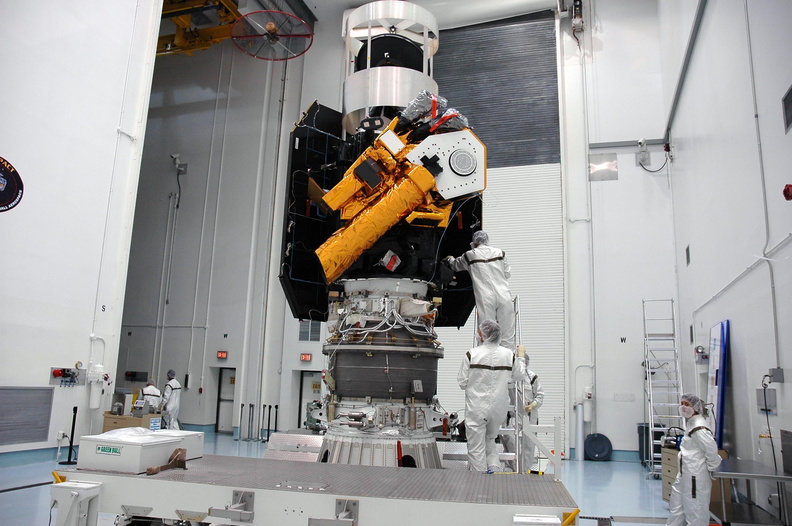
WIKIARCHIVES.SPACE
The Human Spaceflight Archive

The Deep Impact spacecraft waits at Astrotech Space Operations in Titusville, Fla., for placement of a protective cover before the canister is installed around it. Once the spacecraft is completely covered, it will be transferred to Launch Pad 17-B on Cape Canaveral Air Force Station, Fla. Then, in the mobile service tower, the fairing will be installed around the spacecraft. The fairing is a molded structure that fits flush with the outside surface of the Delta II upper stage booster and forms an aerodynamically smooth joint, protecting the spacecraft during launch. Scheduled for liftoff Jan. 12, Deep Impact will probe beneath the surface of Comet Tempel 1 on July 4, 2005, when the comet is 83 million miles from Earth. After releasing a 3- by 3-foot projectile to crash onto the surface, Deep Impacts flyby spacecraft will reveal the secrets of its interior by collecting pictures and data of how the crater forms, measuring the craters depth and diameter as well as the composition of the interior of the crater and any material thrown out, and determining the changes in natural outgassing produced by the impact. It will send the data back to Earth through the antennas of the Deep Space Network. Deep Impact is a NASA Discovery mission.
Information
- Taken in
- Kennedy Space Center
- Auteur
- NASA
- Description
-
The Deep Impact spacecraft waits at Astrotech Space Operations in Titusville, Fla., for placement of a protective cover before the canister is installed around it. Once the spacecraft is completely covered, it will be transferred to Launch Pad 17-B on Cape Canaveral Air Force Station, Fla. Then, in the mobile service tower, the fairing will be installed around the spacecraft. The fairing is a molded structure that fits flush with the outside surface of the Delta II upper stage booster and forms an aerodynamically smooth joint, protecting the spacecraft during launch. Scheduled for liftoff Jan. 12, Deep Impact will probe beneath the surface of Comet Tempel 1 on July 4, 2005, when the comet is 83 million miles from Earth. After releasing a 3- by 3-foot projectile to crash onto the surface, Deep Impacts flyby spacecraft will reveal the secrets of its interior by collecting pictures and data of how the crater forms, measuring the craters depth and diameter as well as the composition of the interior of the crater and any material thrown out, and determining the changes in natural outgassing produced by the impact. It will send the data back to Earth through the antennas of the Deep Space Network. Deep Impact is a NASA Discovery mission.
- Créée le
- Dimanche 2 Janvier 2005
- Source link
- https://science.ksc.nasa.gov/gallery/photos/2005/
- Visites
- 28
- Bilan
- pas de note
- Votez pour cette image
- License
- CC BY-NC-ND
- Modified by WikiArchives
- No (original)
- Téléchargements
- 1
Propulsé par Piwigo